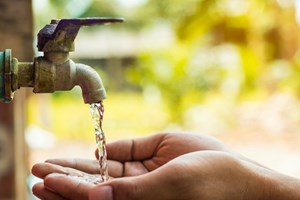New Jersey American Water launches interactive webpage to educate about lead service lines
New Jersey American Water has created a robust, interactive webpage and map that will allow customers to view the service line material of their property or any property in its service areas in the state. The map can be found on the company's website.
The educational webpage and map were created in response to New Jersey state legislation that requires all water providers to share with customers the material of the utility-owned and customer-owned service lines that lead to their property, notify customers with service lines that are lead or galvanized steel, and replace them within ten years.
“Our goal in creating this webpage and map is to proactively and transparently communicate to customers not only the information about their service line material, but also what we do to provide water that meets water quality regulations, ways they can help reduce their potential exposure to lead, and how they can help inform our lead service line replacement program,” said Mark McDonough, president of New Jersey American Water. “We are committed to accelerating our program to replace all lead and galvanized service lines more expeditiously than the law’s ten-year requirement.”
The company has also created an educational video and a video that demonstrates how to use the map, which can be found on the webpage and on its YouTube channel.
In accordance with the new lead service line replacement law, New Jersey American Water is also required to send certified letters to all customers whose properties are served by a lead or galvanized steel service line. The company wants to assure its customers that if their service line contains lead or galvanized pipe, it does not mean they can’t use water as they normally would. The water provided by New Jersey American Water meets state and federal water quality standards, including those set for lead.
“We regularly test for lead at the end of our treatment process as required by the NJ Department of Environmental Protection, and we also conduct tests in our distribution system in accordance with the EPA regulatory requirements. This testing has shown that lead is not an issue in the water exiting any of our water treatment facilities,” said McDonough. “In addition, we take steps to reduce the potential of lead leaching from service lines and household pipes into the water by managing the pH levels in the water leaving our treatment facilities and adding a corrosion inhibitor where needed. Our lead and copper test results show that our continued investment in infrastructure and our treatment processes are working; our water meets standards.”
Related News
From Archive

- Glenfarne Alaska LNG targets late-2026 construction start for 807-mile pipeline project
- U.S. water reuse boom to fuel $47 billion in infrastructure spending through 2035
- $2.3 billion approved to construct 236-mile Texas-to-Gulf gas pipeline
- Major water pipe break in Puerto Rico hits over 165,000 customers
- Potomac River Tunnel project enters construction phase beneath Washington, D.C.
- Pennsylvania American Water launches interactive map to identify, replace lead water service lines
- Trump's tariffs drive $33 million cost increase for Cincinnati sewer project
- Utah city launches historic $70 million tunnel project using box jacking under active rail line
- Tulsa residents warned after sewer lines damaged by boring work
- Fatal trench collapse halts sewer construction in Massachusetts; two workers hospitalized




Comments